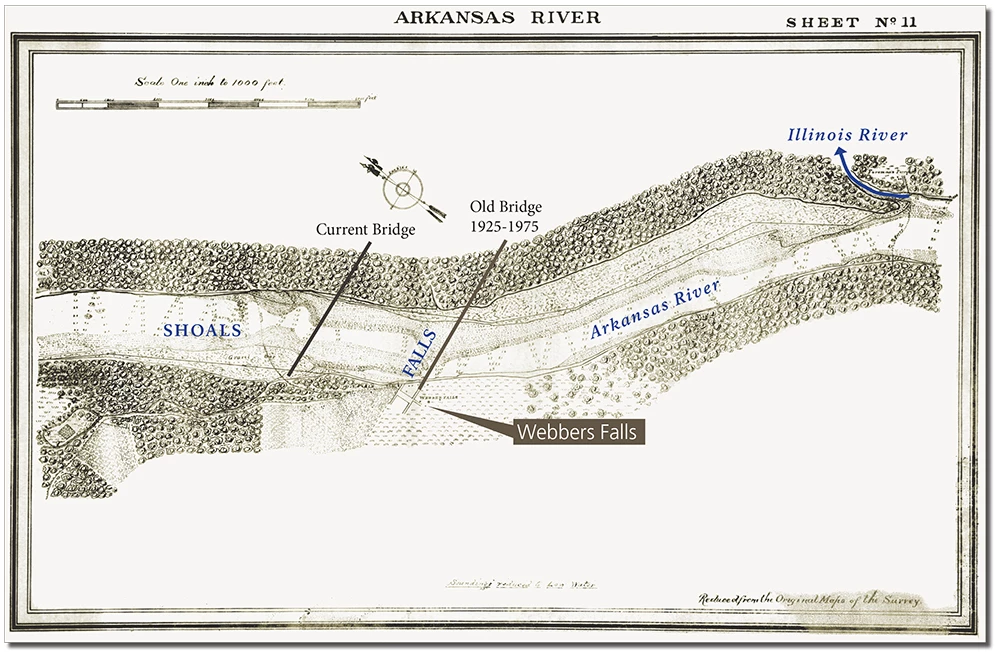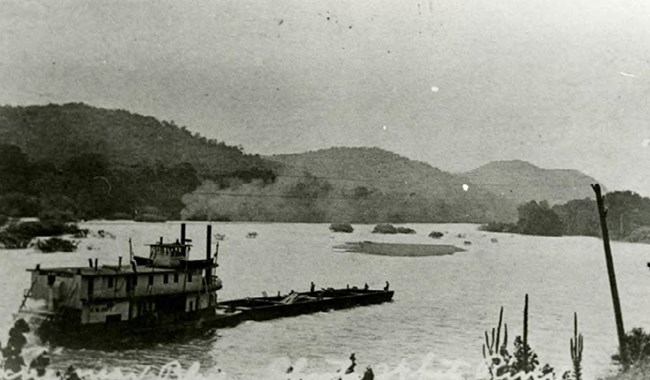Last updated: June 11, 2020
Article
Webbers Falls - "really a beautiful fall"
Narcissa Chisholm Owen remembered her mother’s descriptions of how Webbers Falls appeared before the terrific floods in 1833 changed the landscape forever:
Mother told me that when she moved from lower Arkansas to the present country, at Webbers Falls, about 1828, there was really a beautiful fall, nearly or quite across the whole of the Arkansas River, about three or four feet in height.
Mother told me that when she moved from lower Arkansas to the present country, at Webbers Falls, about 1828, there was really a beautiful fall, nearly or quite across the whole of the Arkansas River, about three or four feet in height.

Lay of the Land
Today’s Webbers Falls looks quite different from the land that early Cherokee settlers found upon arrival. By the time of the Trail of Tears, Cherokee government and commercial centers already existed. This location was a natural choice— the town sits near the confluence of the Arkansas and Illinois rivers and the nearby falls prevented travel upriver during frequent periods of low water.
Cultural Geography
Indian Territory was divided and assigned to tribes forced west during Indian Removal. The Cherokee that originally settled in this area were Old Settlers that moved west on their own. When Cherokee arrived on the Trail of Tears, they proceeded to designated disbandment sites and settlement areas.
Today’s Webbers Falls looks quite different from the land that early Cherokee settlers found upon arrival. By the time of the Trail of Tears, Cherokee government and commercial centers already existed. This location was a natural choice— the town sits near the confluence of the Arkansas and Illinois rivers and the nearby falls prevented travel upriver during frequent periods of low water.
Cultural Geography
Indian Territory was divided and assigned to tribes forced west during Indian Removal. The Cherokee that originally settled in this area were Old Settlers that moved west on their own. When Cherokee arrived on the Trail of Tears, they proceeded to designated disbandment sites and settlement areas.

Steamboat W. C. Huff on the White River, ca. 1900. Source: Rivers, Landings, and Riverboats Photograph Collection, UALR Center for Arkansas History and Culture.
Proceed to Old Settlers, New Homeland.
Return to Itinerary for Western Arkansas and Oklahoma.
